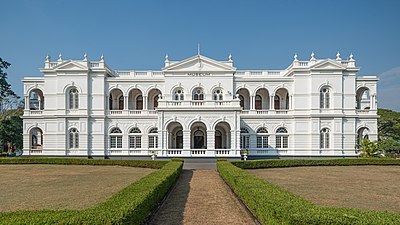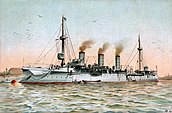From today's featured articleMartin Rundkvist (born 4 April 1972) is a Swedish archaeologist who focuses on the Bronze, Iron, and Middle Ages of Scandinavia. He has excavated various sites in Sweden. In a 2011 book, he identified nine possible regional power centres in Östergötland, and attempted to determine where the "Beowulfian mead halls" of the day once stood. Years later at one of these sites, Aska, he uncovered the foundations of a large mead hall, and 22 ornate gold figures that may have represented gods or royals. Rundkvist has also catalogued the finds from Barshalder, the largest prehistoric cemetery on Sweden's Gotland island; excavated the boat grave of a Viking; and analysed both the placement of deposited artefacts in the landscape and the lifestyles of élite Scandinavians during the Middle Ages. Rundkvist authors the blog Aardvarchaeology, which the James Randi Educational Foundation termed "the most-read archaeology blog on the Internet". He is an associate professor at the University of Łódź in Poland. (Full article...)
Recently featured:
Did you know ...
|
In the news
On this day
|
From today's featured list
In the 1880s and 1890s, Germany built nine unprotected cruisers in three classes. These ships proved to be transitional designs, and experience gathered with them and a series of avisos helped to produce the first light cruisers of the German Navy. The unprotected cruisers, generally designed for service in Germany's colonial empire, required great endurance and relatively heavy firepower. The first ships of the type, the two Schwalbe-class cruisers, were acquired in an effort to modernize an aged cruiser force that relied primarily on old sail frigates. All nine cruisers served extensively in Germany's colonies and foreign interests, particularly in Africa, Asia, and the Pacific. They participated in the suppression of numerous rebellions, including the Abushiri revolt in German East Africa in 1889–90, the Boxer Rebellion in China in 1900–01, and the Sokehs rebellion in the Caroline Islands in 1911. Most of the ships were recalled to Germany and decommissioned by the early 1910s, having been replaced by newer light cruisers. (Full list...)
Today's featured picture

|
The Colombo National Museum is a museum in Colombo and the largest in Sri Lanka. Established in January 1877 and maintained by the Department of National Museums, it holds collections of significant importance to Sri Lanka, such as the regalia of the Kingdom of Kandy, as well as many other exhibits relating the country's cultural and natural heritage. This photograph depicts the facade of the museum, housed in a 19th-century building constructed by Arasi Marikar Wapchie Marikar. Photograph credit: Alexander Savin
Recently featured:
|
Other areas of Wikipedia
- Community portal – The central hub for editors, with resources, links, tasks, and announcements.
- Village pump – Forum for discussions about Wikipedia itself, including policies and technical issues.
- Site news – Sources of news about Wikipedia and the broader Wikimedia movement.
- Teahouse – Ask basic questions about using or editing Wikipedia.
- Help desk – Ask questions about using or editing Wikipedia.
- Reference desk – Ask research questions about encyclopedic topics.
Wikipedia's sister projects
Wikipedia is written by volunteer editors and hosted by the Wikimedia Foundation, a non-profit organization that also hosts a range of other volunteer projects:
-
Commons
Free media repository -
MediaWiki
Wiki software development -
Meta-Wiki
Wikimedia project coordination -
Wikibooks
Free textbooks and manuals -
Wikidata
Free knowledge base -
Wikinews
Free-content news -
Wikiquote
Collection of quotations -
Wikisource
Free-content library -
Wikispecies
Directory of species -
Wikiversity
Free learning tools -
Wikivoyage
Free travel guide -
Wiktionary
Dictionary and thesaurus
Wikipedia languages
This Wikipedia is written in English. Many other Wikipedias are available; some of the largest are listed below.
-
1,000,000+ articles
-
250,000+ articles
-
50,000+ articles




